There’s a chance that the Braves make the playoffs this year. About a 4.5% chance, if you take the Baseball Prospectus, Fangraphs, and Five Thirty-Eight playoff odds and average ‘em.
Projection systems aren’t meant to be prediction systems, and they’re not perfect, of course. The Royals were semi-famously projected to win 70-something games by all the stat folks in 2015, and then won the damn World Series. But projections systems miss to the low side, too. The Braves are just as likely to come up short of their rest-of-season projections as they are to beat them.
Let’s just say the smart money is on a leisurely, uneventful October for our Bravos.
I know many of you are already expressing grievances with this view, data be damned. The Braves are in 2nd place, and only 2 games under .500! I hear ya. Of course, we’re also 9.5 games behind a far superior Nationals team, and have an 7 game climb standing between us and the wild card.
That claim of Nationals superiority demands some justification. This table shows cumulative WAR by position via Fangraphs.
| Postion | Braves WAR | Nationals WAR | Braves Differential |
|---|---|---|---|
| C | 2.3 | -0.4 | +2.7 |
| 1B | 4.0 | 2.5 | +1.5 |
| RP | 0.9 | -0.9 | +1.0 |
| CF | 2.1 | 2.6 | -0.5 |
| LF | -0.5 | 0.2 | -0.7 |
| SS | -0.2 | 2.4 | -2.2 |
| 2B | 0.2 | 2.6 | -2.4 |
| RF | 0.1 | 3.7 | -3.6 |
| 3B | 0.2 | 4.4 | -4.2 |
| SP | 2.8 | 10.3 | -7.5 |
That’s just about comprehensive dominance by position. But that’s just the first half! And the Braves could slip into the postseason without catching the Nats via the wild card, of course. Either route to October baseball requires a much more successful second half, though, and that must be accomplished while playing what looks to be a tougher schedule from this point on.
Let’s get a bit more granular and try to anticipate our chances for improvement in the second half.
Position Players
Here are the top 10 Braves position players by fWAR so far. If you create the list instead by weighted runs created plus (wRC+) to focus only on offense (some do!), you end up with the same 10 players slightly rearranged. It’s worth noting here that our prized shortstop doesn’t make the list either way. Poor Dansby.
- Freddie Freeman (3.0 fWAR)
- Ender Inciarte (2.3)
- Tyler Flowers (1.4)
- Matt Adams (1.1)
- Brandon Phillips (1.0)
- Kurt Suzuki (0.9)
- Johan Camargo (0.9)
- Matt Kemp (0.2)
- Nick Markakis (0.1)
- Danny Santana (0.0)
Freddie Freeman is immune to any negativity and/or pessimism herein. His status is unimpeachable, and his performance a beacon of hope (although it wouldn’t be at all surprising to see him dial it back slightly from his recent level of production). Moving on to everyone else.
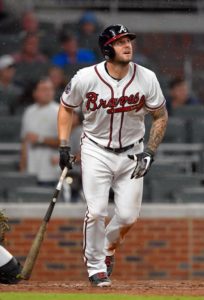
The obvious place to start here is ole Matt Adams. First off, the most likely outcome is that Adams isn’t on the team for more than a few more weeks. I know, I know, Freeman at third and all. But that is unlikely to work out. If it was obvious that Freeman would be a good third baseman, he would already be there, being that it’s a tougher position to play and therefore a more valuable place to stick a slugger. I assure you that this concept has not been lost on our front office (the evil old one included).
But even assuming he sticks around, Adams early work with the Braves was WAY above his career numbers. Looking at his work in June because it captures his early hot streak in a Braves uni (and makes my research easier), those heady weeks clocked in around 40 points higher than his career average, about 60 points higher than his career OBP, and nearly 200 points higher (!) than his career slugging percentage. Adams’ wRC+ as a Brave in June was almost 50 points higher than he has been as a major leaguer overall. Just to pile on, it’s worth noting that his career offensive numbers are buoyed by a single solid year back in 2013, which isn’t exactly yesterday. In other words, Adams hot month screams “regression!” at even higher decibels when you compare it to his more recent work since 2014. This is all before his current slump began chipping away at his numbers, which are inching back towards pedestrian all the time.
Tack on the fact that Adams faced very nearly the worst pitching competition of any batter in the bigs in June according to Baseball Prospectus, and the picture should be getting clearer.
It’s fine to get qualitative and point out that Adams has a new club, a new everyday role, and a better swimsuit body. But if Matt Adams is the Braves first baseman at season’s end, it’s far more likely that he’ll feel like a letdown to those hanging their hats and hopes on him than otherwise. As Jeff Sullivan recently put it on Effectively Wild, Matt Adams “remains, very presumably, still Matt Adams,” despite his recent output.
The next source of potential anguish is Brandon Phillips. He’s been pretty good! He’s probably gone!
Phillips is sitting right at 1 WAR according to Fangraphs, and his wRC+ has been bouncing around 100 most of the season (93 currently). He’s basically the archetype of the average major leaguer right now. Not an inspiring sentence, that, but reliably average middle infielders can put a competitor over the top just like anything else. A team in the hunt for the playoffs will have much more use for the last half-season of Phillips’ contract than Atlanta, so his production is in grave danger of walking out the door in the coming weeks. He only has limited trade protection, and he has already been generating interest from clubs according to reports.
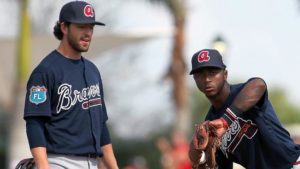
This leads naturally to the question of who rounds out the infield if Phillips and/or Adams are out of the picture. It’ best to look at the mix as a whole. Ozzie Albies is likely on the cusp of a call up, utility fella Sean Rodriguez is almost back from shoulder injury, Johan Camargo has been getting starts at short recently and finding success (poor Dansby), Adonis Garcia will assumedly be available again at some point, Rio Ruiz is still a thing. In my accounting, Rodriguez is the only name among those mentioned that inspires any confidence. That’s not good, because he’s a 32-year-old coming off of an injury, hoping to get back to being an average-ish major leaguer, a feat he’s only achieved in 3 of his 7 seasons in the league. Beyond Rodriguez, it’s probably unreasonable to expect Ozzie to produce right away, Camargo is Adams-esque in that his recent, small sample success obscures that he’s been a below average hitter in the minor leagues (didn’t we already go through this with Adonis Garcia?), and Ruiz hasn’t yet shown the ability to handle major league pitching.
This is all obviously complicated by the fact that Dansby has been a middling defensive shortstop, while only coming out of a terrible slump to briefly be an almost average hitter (94 wRC+ in June). One could parlay this into an optimistic argument; I gotta believe that Swanson is better than what we’re getting right now. Maybe he’ll tap into a true talent that we’re not yet seeing in the second half. Maybe he won’t.
It would be very easy to look at our infield options and fashion an optimistic outlook. I mean, at least we have options. But the outcome of losing Adams and/or Phillips would very likely be reduced production from our infielders.
Let’s look for help elsewhere.

It’s looking like the Braves outfield will stay intact during the second half. We’re delightfully good-to-go in center with our All-Star stalking baseballs out there. There doesn’t seem to be a strong will to trade Matt Kemp, and there doesn’t seem to be a strong demand for Nick Markakis. For better or worse, it seems likely that we’ll stick with those two in the corners. So is it for better or worse?
Kemp has been a reliably productive lineup presence. He’s been reliably bad in left field. I’m going to drill down on how bad for a moment, just because it’s fun that Matt Kemp is a handsomely rewarded baseball player despite being awful at a huge chunk of what playing baseball is: among the 43 left fielders with a least 200 plate appearances, Kemp is tied for last by Defensive Runs Saved at -11, and 39th by Ultimate Zone Rating per 150 games (UZR/150) at -14.9. Whatever. That’s who Kemp is, and when he hits the team still benefits from his play overall. If he slumps though, perhaps due to nagging injury such as he’s endured this year, he becomes an outright liability. Markakis is a less radical Kemp. He doesn’t hit as well, but he is a better-though-still-bad defender. It amounts to the same; our corner outfield production is poor, and doesn’t show signs of improving based on the age and career trajectory of Kemp and Markakis.
A little nugget of interest as we depart from the outfield: Ronald Acuña has been promoted to AAA, and has been making serious noise all year in Florida (A+) and Mississippi (AA). If this trend continues, we may get a glimpse into the future earlier than most expected in 2017. However, once you factor in the disadvantage of staring Acuña’s service clock to join such a flawed team, it seems unlikely that his rising star power will influence the team to sell low on Markakis or part with Kemp. Still, it’s nice to think about.
#Braves prospect Ronald Acuña pulled an Aaron Judge for the @mbraves Tuesday. He belted a home run over the batter's eye at Trustmark Park. pic.twitter.com/7SIOOoD3EM
— Grant McAuley (@grantmcauley) July 12, 2017
A point of pride for the Braves can be found at catcher, where the club has benefitted from truly top-level performance. The Braves duo of Tyler Flowers and Kurt Suzuki has been around tops in the league via catcher WAR, looking its best when pitch framing is taken into consideration. This is buoyed by Flowers, who indeed seems to have established himself as a quality option behind the plate. It must be noted though that Flowers is riding an unsustainably inflated .372 BABIP. I expect Flowers to continue to be very valuable, but probably cool off with the bat in the second half. His current 125 wRC+ is 33 points higher than his career mark and even 15 points higher than his career best result of 110 last season.
So, much like Camargo and Adams recently, catcher production has been an unexpected bright spot that is likely to dim, even if only slightly.
Pitchers
Casting our gaze now upon the hurlers, we’ll address the rotation first. Here’s a quick glance at the Braves starters by Fangraphs WAR:
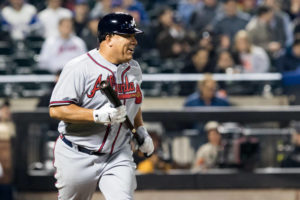
- Jaime Garcia (0.9 fWAR)
- Mike Foltynewicz (0.7)
- Sean Newcomb (0.7)
- R.A. Dickey (0.6)
- Bartolo Colon (0.2)
- Julio Teheran (-0.1)
There seems to be a market developing for Jaime Garcia’s mostly steady output, which of course points towards a commiserate likelihood of his being traded. This would clearly reduce the chance of second half success, being that Garcia has accrued the most positive impact among Braves starters so far.
Encouragingly, the Braves have recently benefitted from what will likely be seen as the good ‘ole days of Sean Newcomb as far as 2017 goes. It’s encouraging because Newcomb’s first few starts featured excellent command in rather out of the blue fashion. Newcomb has seen percentage of pitches for strikes fall and his walk rate climb in his most recent starts, however. It’s a very small sample, but that micro-trend is reflective of Newcomb’s struggles with command so far in his career. The optimism is there, but it’s still to early to know what we’ll get from Newcomb going forward.
Zooming out a bit, the rotation as a whole has been bad – to the tune of 25th in pitcher fWAR and 22nd by both ERA and FIP – and it’s hard to see it getting much better.
Sure Folty has had a confidence-instilling first half. But remember that what we’re really more confident about is simply his ability to stick in the rotation at all. That’s no small thing in the grand scheme, but it’s not the same as expecting a big breakout that could elevate the club.
Sure Julio Teheran seems ripe for some positive regression towards his career numbers; his home run per fly ball rate and both his K/9 and BB/9 rates would all be his worst since joining the Atlanta rotation if the season ended today, this despite having allowed a hard contact rate (via Fangraphs) that would be the best of his career if the season ended today. It’s also worth mentioning that Fangraphs WAR may undervalue Julio, because it’s calculated with FIP, and Teheran has consistently posted ERA numbers superior to his FIP during his career. But who even knows who Teheran is at this point.
What we do know is that any combination of losing Garcia and any backsliding from the still green Foltynewicz and Newcomb would probably neutralize any second half improvement from Teheran. Indeed, it’s hard to envision much overall improvement from the rotation, save for an acquisition of a quality arm.
And hey, we might go on out and nab a quality arm! Alright, so maybe Jose Quintana was gobbled up by the evil Cubs (yeah, my goodwill towards the Cubs has already run out). Ok, it’s true that we’re far from the only teams looking at Sonny Gray and Chris Archer, and the Rays may not even be interested in moving the latter. It’s also true that we’re not a high-payroll team like some other clubs that are shopping around for starting pitching. Just the same, the Braves do seem to be actively working to improve in the short- and medium-term. We could end up with a blockbuster deal that bestows upon us some real rotation help.
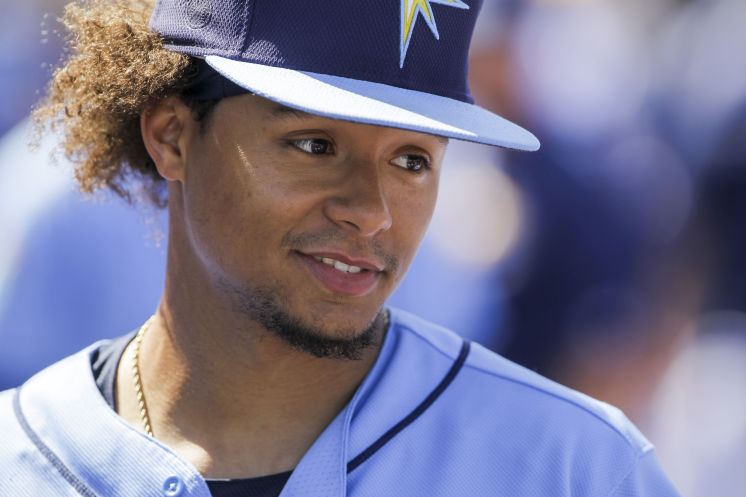
Maybe this hypothetical shot in the arm would actually help us in 2017, maybe it would be a a bust initially. I’ll let the reader decide the appropriate degree of optimism to glean from this possibility.
On to the bullpen.
The relievers have been comfortably below league average in 2017 any way you slice it. On top of that, Jim Johnson and Arodys Vizcaino have both been drawing interest from other clubs. It’s hard to look around at the pen and justify a prediction of marked improvement in the second half. Johnson has probably been a little unlucky this year based on his solid FIP and the quality of contact that he’s surrendered, but that’s about it. Prospect A.J. Minter could help if he’s called up soon, but such a development would have to be part of a larger trend of improved relief pitching to show up in the Braves’ win column in any significant way.
Oh, and Jason Motte seems to be garnering some interest around the league. It seems weird to lament something like that, but heck, he has been… well, ya know what, never mind. I rescind my eleventh-hour lamentation. He’s been riding a minuscule .225 BABIP and I’m just not going to cry about losing Jason Motte. We’re better than that, Braves fans.
Fear and Hoping
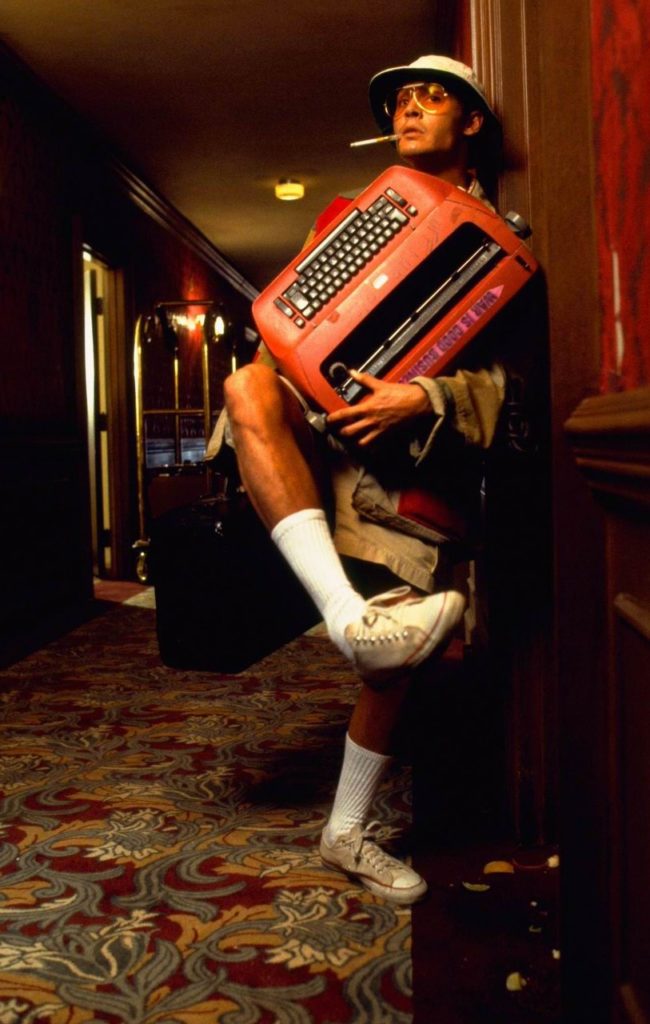
Taken together, the points made here amount to an argument for likely backsliding in the second half.
What meager success the Braves have had so far has been a product of some inconvenient realities: suddenly and likely unsustainably career-best production from several players, the contributions of players now likely to be traded, and a tremendously easy schedule that seems nearly certain to be tougher in the second half.
What’s the import of this? Is my glass half-empty simply because I’m now accustomed to the doldrums of the rebuild? Maybe. Where would we be without defense mechanisms?! But given what I’ve laid out, I feel that we should all be pulling for the front office to avoid grounding their deadline decisions in the ambition to squeeze every possible win out of this season. We’re very likely to fail if we shoot for the playoffs, and making impulsive, reactionary decisions now would discount how much of a bummer it’s been enduring these dark times.
If you’d rather get your hopes up, then by all means rationalize this some other way and disregard these words! At the end of the day, sports fandom doesn’t have to make sense. But be careful out there, optimists.

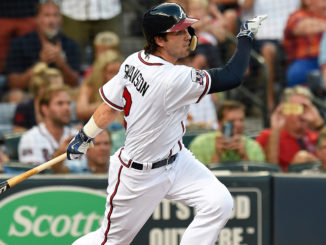


Leave a Reply